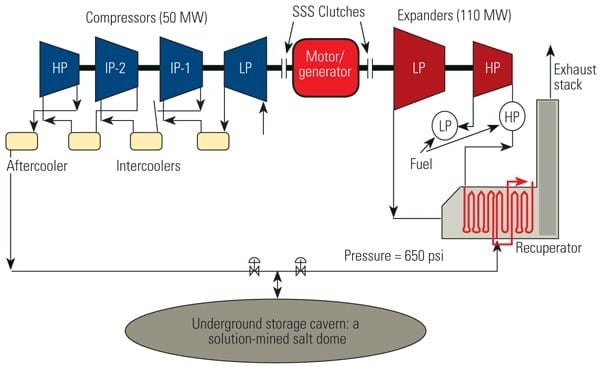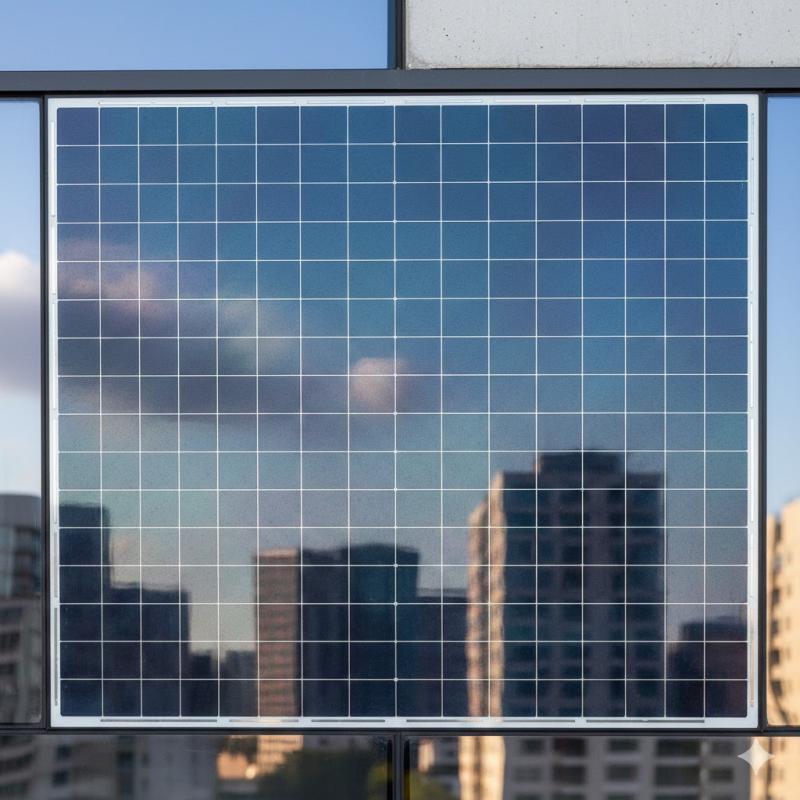Wind energy market drives crane financing – Equipment Finance News

Report on the Wind Energy Sector’s Impact on Crane Finance and Sustainable Development Goals
Market Growth and Contribution to SDG 7 (Affordable and Clean Energy)
The global expansion of wind energy, a critical component in achieving Sustainable Development Goal 7 (Affordable and Clean Energy) and SDG 13 (Climate Action), is driving significant activity in the crane finance and manufacturing sectors. The transition to renewable energy sources is reflected in substantial market growth projections.
- The global wind energy market is projected to grow from $115.3 billion in 2024 to $361.2 billion by 2035.
- In the United States, wind power generation has increased by 34% over the past four years, demonstrating a tangible shift towards cleaner energy infrastructure.
Infrastructure Development and Innovation in Support of SDG 9
The construction and maintenance of wind energy infrastructure directly support SDG 9 (Industry, Innovation, and Infrastructure). This has created a surge in demand for heavy-lift equipment, with the North American offshore crane market expected to nearly double to $2.3 billion by 2034. The immense scale of modern wind turbines necessitates technological innovation and specialized equipment solutions.
Specialized Equipment Requirements
- Ultra-high-capacity crawler cranes: Capable of lifting nacelles weighing up to 600 tons.
- Tower cranes: Required for the installation of turbine blades that often exceed 250 feet in length.
- Custom rigging systems: Essential for managing awkwardly dimensioned components and ensuring precise control during installation and maintenance.
Economic Opportunities and Financing in Line with SDG 8 (Decent Work and Economic Growth)
The growth in the renewable energy sector is creating economic opportunities and driving demand for financing, aligning with SDG 8 (Decent Work and Economic Growth). Financial institutions are capitalizing on the need for capital-intensive equipment.
Bas Bennebroek, CFO of Beequip Equipment Finance, noted, “We see strong demands coming from the wind industry here in Europe, but also from the States, which is driving demand for larger and larger cranes not only for new projects but also for maintenance of existing projects.” This demand stimulates economic activity across the equipment finance, manufacturing, and service industries.
Fostering SDG 17 (Partnerships for the Goals) through Industry Collaboration
Achieving the scale required for a global energy transition depends on effective collaboration, as outlined in SDG 17 (Partnerships for the Goals). Original Equipment Manufacturers (OEMs) are forming strategic partnerships with energy companies to develop the necessary technology.
- Palfinger Marine has partnered with sustainable energy company Vestas to provide specialized nacelle cranes for servicing offshore wind turbines.
- Liebherr and Manitowoc have also partnered with energy firms to support the development and maintenance of wind farms, producing cranes capable of reaching heights over 650 feet.
- Palfinger has launched a captive financing arm, Palfinger Financial Services, to provide integrated financial solutions and ongoing service support, further strengthening these industry ecosystems.
Sustainable Consumption Models and the Crane Rental Market (SDG 12)
The equipment rental market offers a model for more efficient resource utilization, contributing to SDG 12 (Responsible Consumption and Production). The global crane rental market is projected to grow from $19.8 billion in 2025 to $43.1 billion by 2034. Renting provides a viable alternative to purchasing high-cost assets like crawler cranes, which can range from $1 million to $5 million.
- Financial Feasibility: Renting mitigates significant upfront capital expenditure, transport costs, and insurance premiums.
- Risk Management: The rental model transfers maintenance and other risks to the provider, allowing businesses to preserve capital for core operations.
- Economic Considerations: While renting is feasible for many, high daily fees make traditional financing and ownership more economical for businesses with regular and consistent crane usage.
Analysis of Sustainable Development Goals (SDGs) in the Article
1. Which SDGs are addressed or connected to the issues highlighted in the article?
- SDG 7: Affordable and Clean Energy: The article’s central theme is the growth of the wind energy industry. Wind power is a key source of clean, renewable energy, and the entire discussion about market growth, equipment demand, and financing is driven by the expansion of this energy source. The text explicitly mentions “wind energy,” “wind power generation,” and a partnership with a “sustainable energy company.”
- SDG 8: Decent Work and Economic Growth: The article details significant economic growth across multiple sectors. It provides financial projections for the global wind energy market, the North American crane market, and the crane rental market, all showing substantial increases. This growth stimulates economic activity and creates business opportunities for OEMs, dealers, rental companies, and financial institutions, thereby contributing to economic growth.
- SDG 9: Industry, Innovation, and Infrastructure: The article highlights the need for and development of new infrastructure (wind farms with turbines up to 1,000 feet tall). It also focuses on the industrial innovation required to support this infrastructure, such as the creation of “specialized solutions,” “ultra-high-capacity crawler cranes,” and “custom rigging systems.” The partnerships between equipment manufacturers and energy companies exemplify the industrial collaboration needed to advance this sector.
- SDG 13: Climate Action: Although not explicitly named, the expansion of wind energy is a fundamental strategy for climate action. By increasing the share of renewable energy, the industry helps reduce reliance on fossil fuels and mitigate climate change. The growth described in the article is a direct consequence of global efforts to transition to a low-carbon economy.
2. What specific targets under those SDGs can be identified based on the article’s content?
- Target 7.2: By 2030, increase substantially the share of renewable energy in the global energy mix. The article directly supports this target by describing the rapid expansion of wind power, noting that “Wind power generation in the United States has increased 34% over the past four years” and the global market is projected to “more than triple” by 2035.
- Target 7.a: By 2030, enhance international cooperation to facilitate access to clean energy research and technology… and promote investment in energy infrastructure and clean energy technology. The article mentions a Dutch lender, Beequip, expanding into North America to finance cranes for the wind industry and a partnership between Palfinger Marine and the sustainable energy company Vestas. These are examples of international cooperation and investment in clean energy infrastructure.
- Target 9.4: By 2030, upgrade infrastructure and retrofit industries to make them sustainable… The construction of massive onshore and offshore wind farms, as described in the article, represents a significant upgrade of energy infrastructure to make it sustainable and clean.
- Target 9.5: Enhance scientific research, upgrade the technological capabilities of industrial sectors… encouraging innovation. The article discusses how OEMs are “responding to growing demand for specialized solutions,” such as developing cranes that can lift 600-ton nacelles and reach heights of over 650 feet to service the newest generation of wind turbines. This is a clear example of upgrading technological capabilities and fostering innovation.
3. Are there any indicators mentioned or implied in the article that can be used to measure progress towards the identified targets?
- Indicator for Target 7.2: The article provides a direct data point that aligns with tracking the share of renewable energy: “Wind power generation in the United States has increased 34% over the past four years.” This percentage increase is a clear indicator of progress.
-
Indicators for Economic Growth and Investment (SDGs 7, 8, 9): The article provides several financial projections that serve as implied indicators of investment in clean energy infrastructure and related economic growth. These include:
- The projected growth of the global wind energy market from $115.3 billion in 2024 to $361.2 billion by 2035.
- The projected growth of the North American offshore crane market to $2.3 billion by 2034.
- The projected growth of the crane rental market to $43.1 billion by 2034.
-
Indicators for Innovation (Target 9.5): The article implies indicators of technological advancement through descriptions of new equipment capabilities. These can be used to measure progress in innovation:
- The development of cranes with lifting capacities of “up to 600 tons.”
- The manufacturing of cranes that can service turbines standing “higher than 650 feet” and “close to 1,000 feet.”
4. SDGs, Targets, and Indicators Table
| SDGs | Targets | Indicators |
|---|---|---|
| SDG 7: Affordable and Clean Energy | 7.2: Increase substantially the share of renewable energy in the global energy mix. | Increase in wind power generation (e.g., “34% over the past four years” in the U.S.). |
| SDG 9: Industry, Innovation, and Infrastructure | 9.4: Upgrade infrastructure and retrofit industries to make them sustainable. | Projected market value growth of the global wind energy market (to $361.2 billion by 2035). |
| SDG 8: Decent Work and Economic Growth | 8.2: Achieve higher levels of economic productivity through diversification, technological upgrading and innovation. | Projected growth of ancillary markets, such as the crane rental market (to $43.1 billion by 2034). |
| SDG 13: Climate Action | 13.2: Integrate climate change measures into national policies, strategies and planning. | The substantial growth and investment in the wind energy sector, which is a key climate action strategy. |
Source: equipmentfinancenews.com
What is Your Reaction?
 Like
0
Like
0
 Dislike
0
Dislike
0
 Love
0
Love
0
 Funny
0
Funny
0
 Angry
0
Angry
0
 Sad
0
Sad
0
 Wow
0
Wow
0
















































:focal(1500,1000)/https://media.globalcitizen.org/a6/9a/a69a4720-d8a1-4715-b596-18738d03c05c/rotary_polio_hero_image.jpg?#)







/countries/sri-lanka/photo-credit---dmc-sri-lanka.tmb-1200v.jpg?sfvrsn=dc298bcc_1#)

















